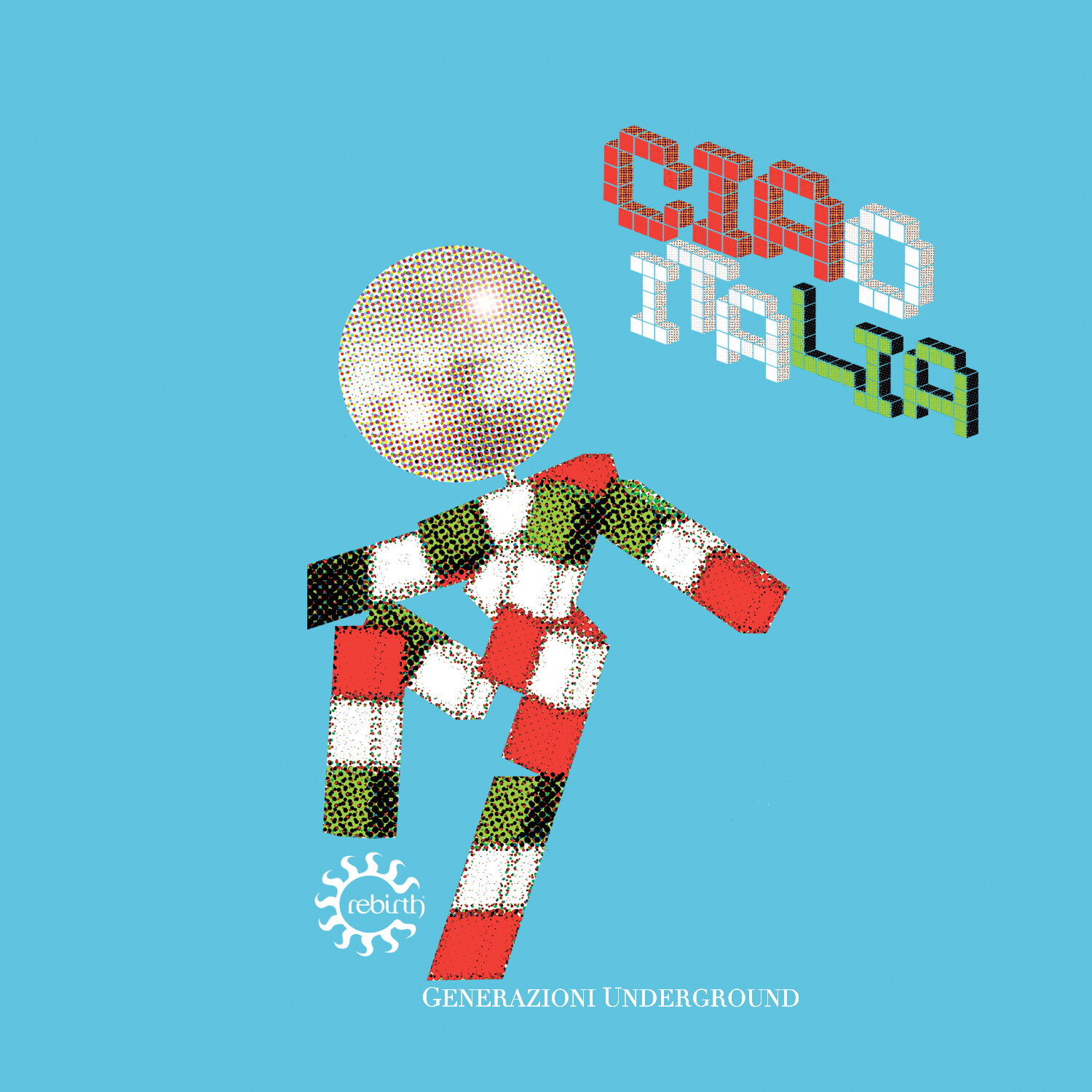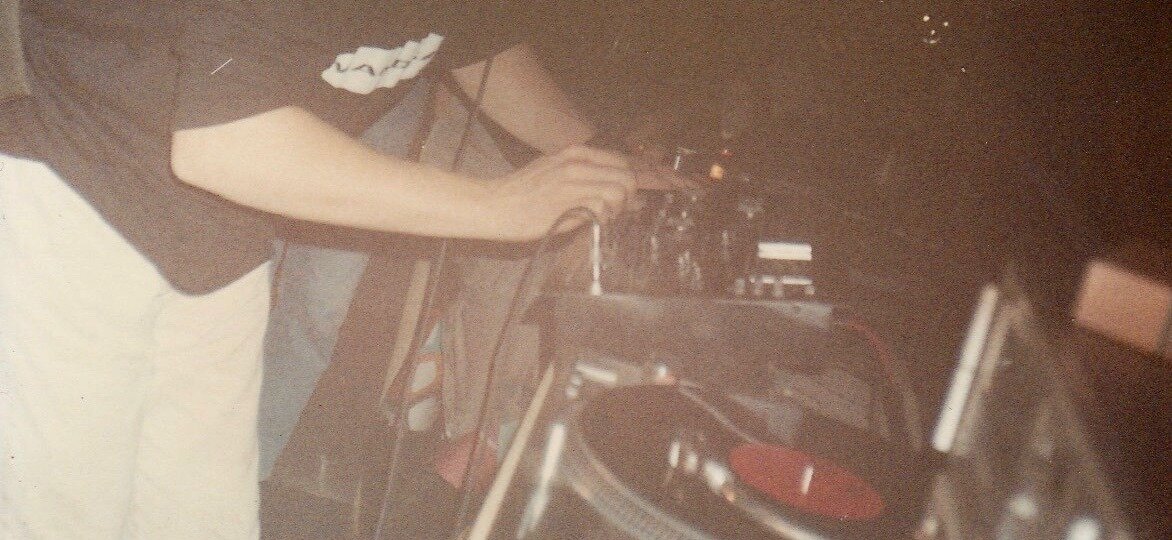Generazioni Underground: Optik - Music, Harmony And Rhythm (1991)
Our second feature of the series which explores direct recollection from legendary Italian house tracks combines the memories of two pioneers of the dream house scene
‘Ciao Italia, Generazioni Underground’ Album Cover
This is the second feature of a series of recollection articles, in sight of the release of a huge project: ‘Ciao Italia, Generazioni Underground’ is a special compilation in double vinyl, including a series of tracks produced in Italy in the early 90s. It’s a tribute to artists who wrote the history of an electronic music style which can be identified as Dream House, Italo House, Piano House, or simply ‘Underground’. You can read more about it in our first feature.
For this first second one, we explore another 1991’s classic ‘Music, Harmony and Rhythm’ by Optik. This is a unique and particularly atmospheric work which pioneered the dream house genre in Italy. Behind the project Optik in this record, there’s two of the most well-respected faces of the scene, Ricky Montanari and Giorgio Canepa (aka MBG). We had the chance to hear from both regarding the scene of those years, and the days and inspiration which led to the creation of this iconic track.
Scorrere in basso per le versioni in Italiano.
Ricky Montanari’s recollections:
The studio where this track was produced was made available by a friend of Gio (MBG), it was inside some kind of flour processing industry complex… I brought to the studio my inseparable Roland and my Juno, everything else belonged to Gio. But we didn’t have a computer, that’s for sure.
On my end, I can say that being a beginner, I had more than enough ideas and desire to do (call it inspiration if you want). It was a beautiful period of time, we had a lot of influences from various European waves such as dream house, the nu-beat / downbeat, or the acid stuff. At the same time I still had disco in my mind (loops such as Johnson - Jumpin’ from 79’, or Queen Samantha - Take A Chance of which a sample is also on the record).
Those days were full of happenings, we hosted the London crew ‘Bang The Party’ for a few days - there was also a Japanese or Korean friend of Larry Levan who told us crazy stories about Garage. I remember a day with a mad snowfall, we took hours to get to the studio, just to come back home and see the first attack of the Gulf War live on CNN. Days full of small and big happenings, and everything contributed to the final result. I think the sensations of peace and harmony that you can hear in the track were a contraposition to the war climate of those days, while the title of the record is basically taken from the sample of Sammy Barbot - it’s the title of one of his song, or to be more precise of a B side of his 80s cover of “Brazilian Rhyme” by Earth, Wind and Fire.
During that time, everything I played at Vae Victis also greatly contributed to the inspiration… The Vae Victis (active from 89 to 91) was a club of the riviera (the Italian seaside area towards Rimini and Riccione, famous for its nightlife) , which opened just after the closure of Diabolika. It usually opened its doors at 6 in the morning and closed between 11 and 12… A real novelty at the time: we could experiment, dare, trying different and alternative music. Everyone danced like crazy, we never got tired. Certainly, the first time this track was played was at the Vae Victis, where we often also played the b-side “Illusions”. The effect was clear as it perfectly captured the spirit of the club and dancefloor. It was the opening and closing theme until the club was open, I think I even shed a couple of tears when I took the needle off the record for the final closing. I will always be particularly attached to this work.
Ricky Montanari
Giorgio Canepa’s recollections:
To be precise, the track was produced in a storage room of the New Factor, which was the complex of a company producing peanuts. They received wagons full of peanuts to refine and sell, it was an industry complex specialised in this. But the most peculiar aspect of this studio was that you could never sit down… There was no chair. And this was a very good thing. As you had to stand up, you were forced to dance as you produced. If there was a swing or something else not working in the track, you immediately noticed as you couldn’t dance right.
Personally, I produced music since around 85/86. That record was an idea of Ricky and me on which we got very determined. Even Discopiù (Italian record distributor) told us “how many do you want to sell… like 300?” (which at the time were very little). But we were so convinced, we loved the music and wanted to put it out there. The record ended up booming, it was one of our best hits and it’s still selling right now.
Thanks to Ricky Montanari I met the great Leslie Lawrance who was also with us in the studio during the production of this track (he’s also credited as a co-producer…). For me it was basically a master degree to be in the studio with him, I learned so much. He had his own very ‘British’ style to produce, he thought me to withdraw from the technical side of things to feel the music, closing your eyes to feel the flow, and even leave some small “mistakes” if it seems like they work.
As Ricky told you, our life outside of the studio was going through an incredible era. I mainly played between Riccione and Rimini, and we had the chance to play basically every day of the week at different times (evening, night, and especially the morning). You had to be young, and physically and mentally prepared. Not everyone could handle many consecutive days of working in the nightlife and partying, those who went hard couldn’t keep up after 48 hours. It was a very full life, but at the same time, it was cheerful and carefree.
Stay tuned for our next feature of the series… For the next edition, we’ll go deep in the memories with Giorgio Canepa and the iconic NoveNove afterhour club.
VersionI in Italiano:
Ricordi di Ricky Montanari:
Lo studio in cui è stata prodotta questa traccia era stato messo a disposizione da un amico di Gio (MBG) all’interno di un complesso tipo lavorazione farine o qualcosa del genere… Portai in studio la mia inseparabile Roland ed il Juno, tutto il resto era di Gio. Ma non avevamo ancora il computer, questo è sicuro.
Da parte mia posso dire che, essendo anche alle prime esperienze, di idee e voglia di fare (chiamala ispirazione se vuoi) ricordo ne avevo in abbondanza. Erano anni meravigliosi, un sacco di influenze dalle varie correnti europee come la dream house, nu-beat e downbeat, e la acid. Allo stesso tempo circolavano in me ancora i residui della disco (come il loop di Johnson Jumpin’ del 79, o Queen Samantha - Take A Chance di cui c’è anche un sample in questo disco).
Erano giorni molto densi di avvenimenti, avevamo ospitato per qualche giorno in studio i londinesi Bang The Party, c’era un amico giapponese o coreano di Larry Levan che ci raccontava aneddoti pazzeschi sul Garage. Ricordo un giorno con una nevicata pazzesca, ci abbiamo messo ore per arrivare in studio, per poi tornare a casa e vedere su CNN il primo attacco in diretta della guerra del golfo. Giorni pieni di piccole grandi cose, tutto ha contribuito al risultato finale. La sensazioni di pace e armonia che si sentono nella traccia secondo me erano anche una contrapposizione al clima di guerra che si respirava in quei giorni. Il titolo del disco viene sostanzialmente dal sample di Sammy Barbot - è il titolo di una sua canzone o meglio di un B side di una sua cover degli anni 80 di “Brazilian Rhyme” degli Earth, Wind and Fire.
In quel periodo, quello che suonavo al Vae Victis contribuiva parecchio all’ispirazione… Il Vae Victis (attivo dall’89 al 91) era un locale della riviera nato subito dopo la chiusura del Diabolika. Apriva alle 6 di mattina e chiudeva tra le 11 e le 12… Una vera novità per l’epoca: si poteva sperimentare, osare, provare tanta musica diversa e alternativa. Si ballava come pazzi e non ci stancavamo mai. Di sicuro per la prima volta il pezzo è stato suonato proprio al Vae Victis, dove suonavo parecchio anche il lato B “Illusions”. L’effetto fu immediato dato che rispecchiava in pieno lo stato d’animo del locale e della pista. E’ stata la sigla di apertura e chiusura finché il locale è stato aperto, e credo di aver fatto anche scendere due lacrime quando ho sollevato la puntina dal disco al termine della chiusura definitiva. Rimarrò sempre legato in modo particolare a questo nostro lavoro.
Ricordi di Giorgio Canepa:
Per essere precisi la traccia è stata prodotta in uno sgabuzzino della New Factor, una società che produceva arachidi. Da loro arrivavano i vagoni pieni di noccioline, era un’azienda specializzata in questo. La peculiarità di questo studio era inoltre che non ci si poteva sedere… Insomma non c’erano sedie. E questa era una cosa MOLTO buona. Stando in piedi, eri obbligato a ballare mentre producevi. Se c’era uno swing, o qualcos’altro che non andava bene, si capiva subito perché non si riusciva a ballare.
Io producevo più o meno dal’85/86. Quel disco era un’idea di me e Ricky su cui ci eravamo fissati. Anche Discopiù ci disse “ma quanti volete venderne di questo… 300 copie?” (allora erano pochissime). Noi eravamo convinti, ci piaceva e volevamo farlo uscire cosi. Il disco poi è andato fortissimo, uno dei nostri successi più grandi e vende un sacco ancora adesso.
Grazie a Ricky Montanari ho conosciuto il grande Leslie Lawrence che era con noi in studio durante la produzione di questo pezzo (è anche creditato sul disco come co-produttore…). Per me è stato praticamente un master stare in studio con lui, talmente ho imparato. Aveva una sua maniera molto particolare ‘all’inglese’ di produrre, mi insegnò ad estraniarsi dalla tecnica per sentire le musica, chiudere gli occhi e seguire il flow, e anche lasciare dei piccoli “errori” se sembrano funzionare.
Anche fuori dallo studio era un’epoca incredibile. Suonavo principalmente tra Riccione e Rimini, e avevamo la possibilità di suonare e far festa praticamente tutti i giorni della settimana a vari orari. Dovevi essere giovane, e anche preparato fisicamente e mentalmente, Non tutti riuscivano a reggere molti giorni consecutivi, quelli che ci davano dentro dopo 48 ore cadevano come grilli. Era una vita intensa e piena ma allo stesso tempo allegra e spensierata.
All the tracks of these feature series will be included in the ‘Ciao Italia, Generazioni Underground’ compilation
‘Ciao Italia, Generazioni Underground’ will be out on June 12th. Stay tuned on Rebirth’s channels for the release:
Soundcloud | Facebook | Instagram




